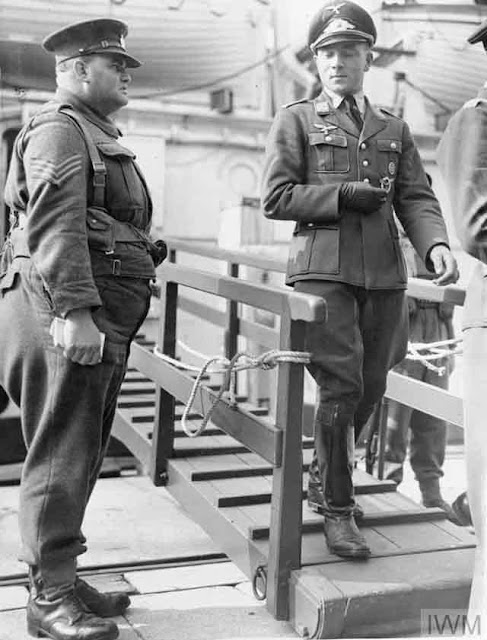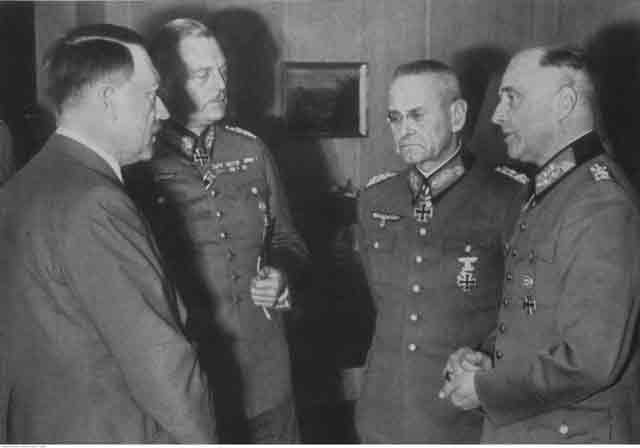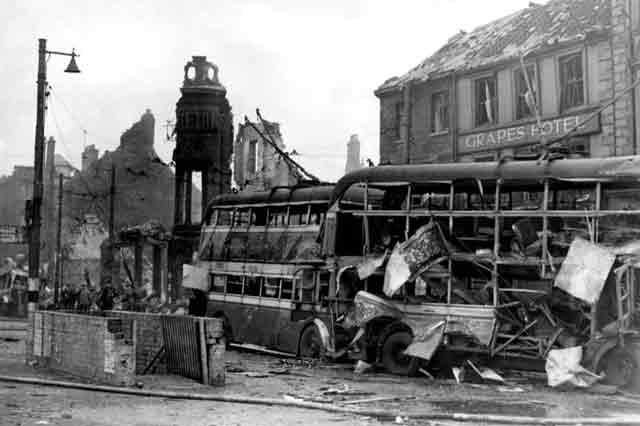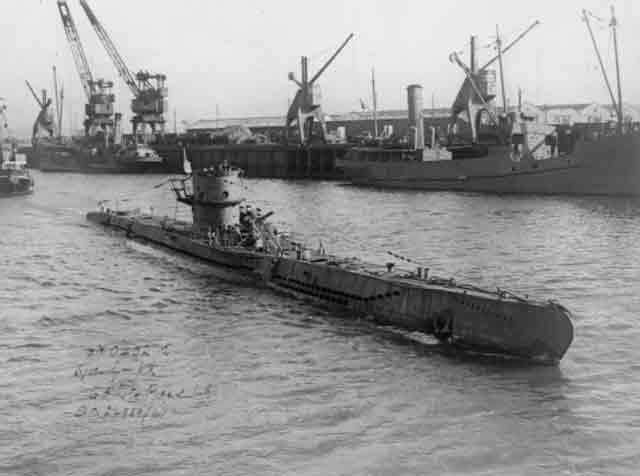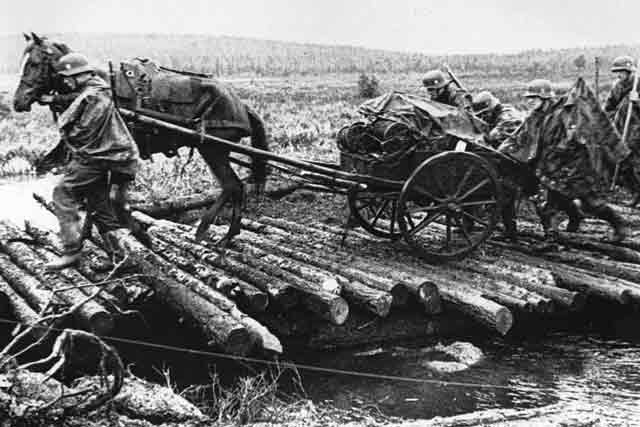Saturday 31 January 1942
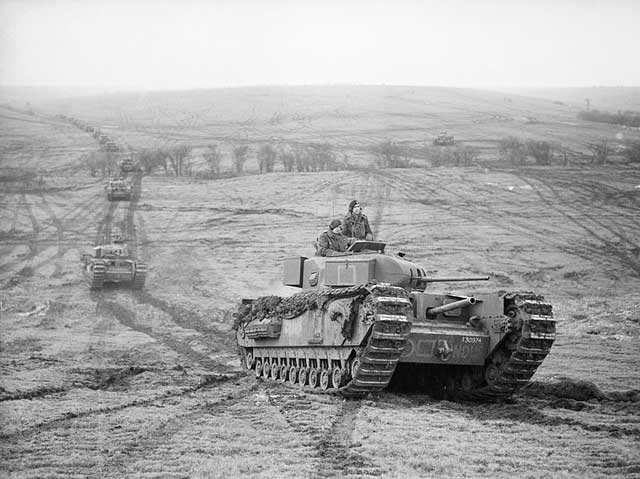 |
| "Churchill tanks of 9th Royal Tank Regiment during an exercise at Tilshead on Salisbury Plain, 31 January 1942. The lead vehicle, 'Indus' of 'B' Squadron, is a Mk I with hull-mounted 3-inch close support howitzer." © IWM (H 16962). |
In the German Army Group South (von Kleist) sector, the Soviet 57th and 9th Armies and some cavalry corps have moved behind the front line of the German 17th Army (General Hoth). Hoth is holding the line in the center of the Army Group South sector, with Sixth Army to his north and First Panzer Army to his south and down to the Sea of Azov. The Soviet breakthrough has taken place in the northern part of Hoth's line, and the Red Army is trying to use two cavalry corps (I and V) to head south to the coast. This would effectively encircle two German Armies and blow a huge hole in the front.
 |
| A German war correspondent, holding a microphone, provides a report of the use of a grenade launcher at an undisclosed location on the front lines, January 1942 (Schröter, Federal Archive Picture 146-1976-128-18). |
 |
| After the conquest of the "Westerplatte," General Eberhard von Mackensen, right, interrogates the captured Polish commander, September 1939. |
 |
| "OHORE, MALAYA. 1942-01-31. JAPANESE TROOPS CROUCH LOW IN THE STREET DURING THE FINAL STAGES OF THEIR INVASION OF THE MALAYAN PENINSULA WHICH CULMINATED IN THE SURRENDER OF ALL BRITISH FORCES, AND THE OCCUPATION OF THE BRITISH NAVAL BASE ON SINGAPORE ISLAND." Australian War Memorial 127900. |
With this move completed, at 0800, British sappers blow a 70-foot (21 m) hole in the Johor-Singapore causeway. This temporarily keeps the Japanese at bay but also seals the fate of all Allied troops that have not yet made it across.
The British now have roughly 85,000 troops in Singapore, while the Japanese are attacking with only about 40,000. However, the Japanese control the mainland while the British effectively are trapped in a pocket with their backs to the sea. The British divide Singapore Island into three sectors: Indian 3 Corps in the North Area, Singapore Fortress troops in the South Area, and Australian troops with the Indian 44th Brigade in the West Area. There is little fighting for the time being, with activity confined to air attacks, patroling, and artillery exchanges. The British have a battery that can fire on the mainland, but it is equipped with armor-piercing ammunition that is of little use against anything but ships - and the Japanese have no ships. Most of the British shells explode relatively harmlessly in the jungle, while the Japanese artillery causes widespread damage on the island. Japanese troops, often disguised as civilians, quickly begin infiltrating across the strait in small groups.
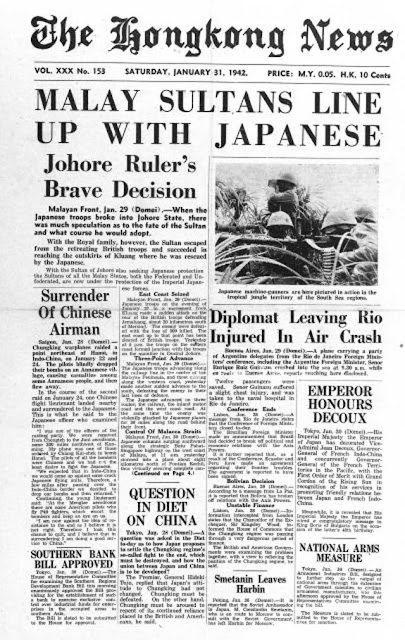 |
| Hong Kong News, 31 January 1942. |
 |
| Japanese enter Moulein, Burma, 31 January 1942 (Lost Footsteps). |
The small US force of mostly radio operators on Howland and Baker Islands is evacuated aboard destroyer USS Helm. The Japanese send a flying boat to bomb it, but the attack fails. Howland is the island that Amelia Earhart and Fred Noonan were trying to reach in July 1937.
European Air Operations: The RAF sends 50 bombers to attack the German naval base at Brest, France, where it loses five planes. Another 14 bombers attack St. Nazaire, six attack Le Havre, and one bomber attacks Cherbourg.
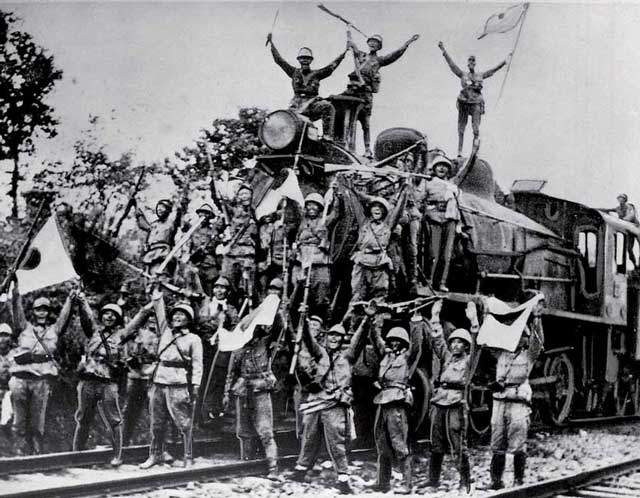 |
| Japanese troops celebrate victory in Malaya, 31 January 1942. (Robert Hunt Library). |
U-107 (Oblt. Harald Gelhaus), on its fifth patrol out of Lorient, torpedoes and sinks 7419-ton British freighter San Arcadio about 590 miles southeast of New York City.
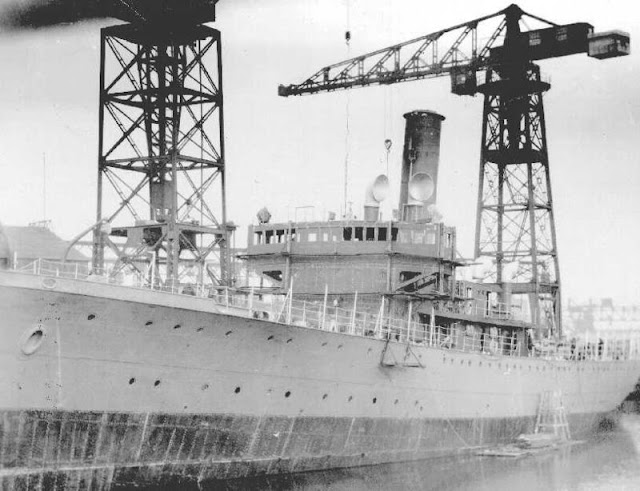 |
| HMS Culver (Y 87). Commissioned: 30 Apr 1941. Fate: Sunk by U-105 on 31 January 1942. |
U-109 (Kptlt. Heinrich Bleichrodt), on its fourth patrol out of Lorient, torpedoes and sinks 7924-ton British freighter Tacoma Star about 320 miles southeast of Atlantic City, New Jersey.
U-333 (Kptlt. Peter-Erich Cremer), on its first patrol out of Kiel, mistakenly sinks 5,083-ton German blockade runner MV Spreewald north of the Azores.
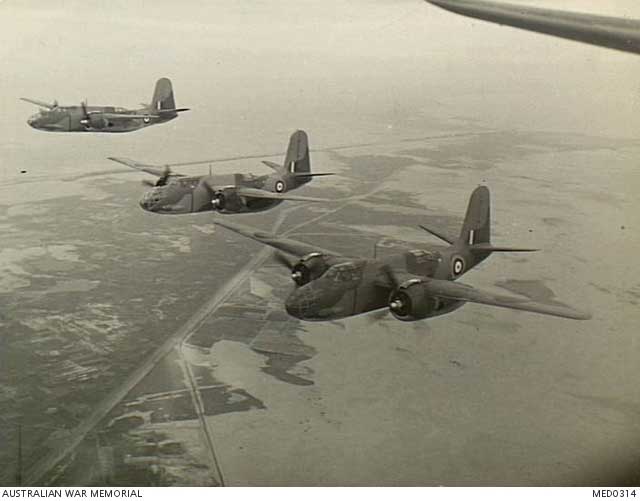 |
| "Western Desert, North Africa. 31 January 1942. Three Douglas Boston A-20 bomber aircraft of the Free French Air Force on patrol in the Middle East. These fast and easily handled American bombers have already proved their worth in desert warfare." Australian War Memorial MED0314. |
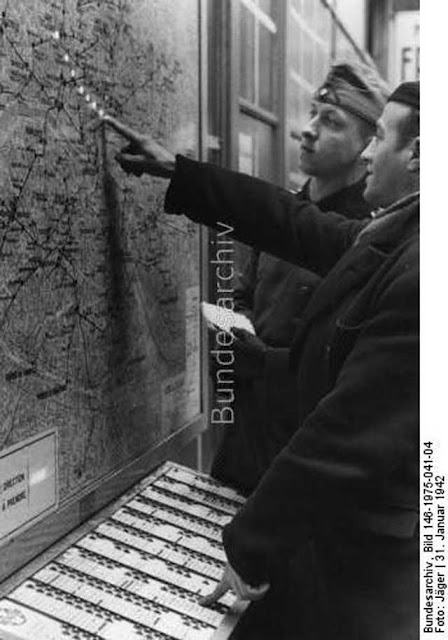 |
| A French civilian in Paris shows a Wehrmacht sergeant a road route on a lighted display, 31 January 1942 (Hunter, Federal Archive Picture 146-1975-041-04). |
US Army: Lieutenant General Joseph Stilwell submits a memorandum to General George C. Marshall, Chief of Staff U.S. Army, informing him of his requirements for a task force in China. This eventually leads to the designation of Stilwell's force as the U.S. Task Force in China.
Major General Ira C Eaker is designated Commanding General, Bomber Command, U.S. Army Forces in the British Isles (USAFBI). General Eaker receives orders to proceed immediately to the British Isles.
 |
| Michael Lee Morgan (January 31, 1942 – December 2, 1996) was a linebacker for the New Orleans Saints from 1969-1970. |
Future History: Daniela Bianchi is born in Rome, Italy. She goes on to study ballet for eight years, then is named first runner-up in the 1960 Miss Universe contest. A fledgling film actress in the early 1960s, Bianchi gets her career role as Tatiana Romanova, a naive Soviet cipher clerk of uncertain allegiance, in the James Bond film "From Russia With Love" (1963). Daniela Bianchi is still alive as of 2019 but retired from acting upon her marriage in 1970.
Michael Derek Elworthy Jarman is born in Northwood, Middlesex, England. His father is an RAF officer who was born in New Zealand. As Derek Jarman, he becomes a renowned film director, stage designer, diarist, artist, gardener, and author. He passes away at age 52 in 1994.
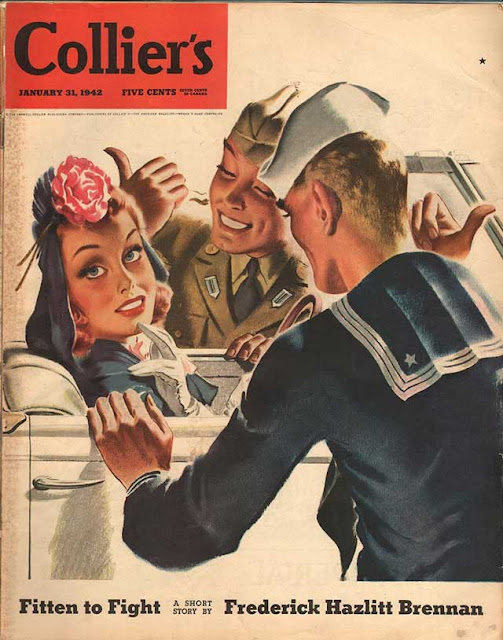 |
| Collier's, 31 January 1942. |
1942
January 1942
January 1, 1942: Declaration By United Nations
January 2, 1941: Manila Falls to Japan
January 3, 1942: ABDA Command Announced
January 4, 1942: MacArthur on His Own in the Philippines
January 5, 1942: Soviets Plan General Offensive
January 6, 1942: US Army in Europe
January 7, 1942: Soviet General Offensive Opens
January 8, 1942: Hitler Sacks Hoepner
January 9, 1942: Battle of Dražgoše
January 10, 1942: Building the Jeep
January 11, 1942: Japan Takes Kuala Lumpur
January 12, 1941: Rommel Plans Counterattack
January 13, 1942: First Ejection Seat Use
January 14, 1942: Operation Drumbeat First Sinking
January 15, 1942: U-Boat Off NYC
January 16, 1942: Carole Lombard Crash
January 17, 1942: British Take Halfaya Pass
January 18, 1942: Soviet Paratroopers in Action
January 19, 1942: FDR Approves Atomic Bomb
January 20, 1942: The Wannsee Conference
January 21, 1942: Parit Sulong Bridge Battle
January 22, 1942: Parit Sulong Massacre
January 23, 1942: Japan Takes Rabaul
January 24, 1942: Battle of Makassar Strait
January 25, 1942: Kholm Surrounded
January 26, 1942: GIs Land in Europe
January 27, 1942: Battle of Endau
January 28, 1942: Rommel Takes Benghazi
January 29, 1942: First US Coast Guard Ship Sunk
January 30, 1942: Singapore Isolated
January 31, 1942: Army Group South Averts Disaster
February 1942
February 1, 1942: The US Navy Strikes Back
February 2, 1942: Germans Recovering in Russia
February 3, 1942: Japanese Shell and Bomb Singapore
February 4, 1942: Battle of Makassar Strait
February 5, 1942: Empress of Asia Sunk
February 6, 1942: The Christmas Island Body
February 7, 1942: The Double-V Campaign
February 8, 1942: Japan Invades Singapore
February 9, 1942: French Liner Normandie Capsizes
February 10, 1942: US Car Production Ends
February 11, 1942: Tomforce Fails on Singapore
February 12, 1942: The Channel Dash
February 13, 1942: Japanese Paratroopers In Action
February 14, 1942: RAF Orders Terror Raids
February 15, 1942: Japan Takes Singapore
February 17, 1942: Indian Troops Defect to Japanese
February 18, 1942: Battle of Badung Strait
February 19, 1942: FDR Authorizes Internment Camps
February 20, 1942: O'Hare the Hero
February 21, 1942: Crisis in Burma
February 22, 1942: Bomber Harris Takes Over
February 23, 1942: Bombardment of Ellwood, California
February 24, 1942: US Raid on Wake Island
February 25, 1942: Battle of Los Angeles
February 26, 1942: Gneisenau Eliminated
February 27, 1942: Battle of Java Sea
February 28, 1942: Battle of Sunda Strait
2020
